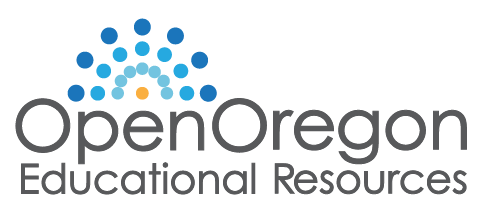This post was contributed by Steve Simonds, Sylvania SLC Faculty Math Tutor and Retired Department of Mathematics Faculty Chair, Portland Community College.
For the past year I have been developing the review/classroom supplement site SLC Math Resources. An Open Oregon Educational Resources grant, in addition to ongoing internal funding, is enabling me to continue this work through the current academic year in order to create more videos and cover more topics.
The need for quality review materials targeted to Oregon community college and university students is acute. Many of the colleges and universities are revising their mathematics placement systems with the intent of placing students as high as possible. The result at Portland Community College (PCC) is that we have shifted from placing 75% of incoming students into MTH 60 or lower to placing 75% of students into MTH 95 or higher. I work in the Student Learning Center and can attest that the amount of missing prerequisite knowledge among the math student population has increased dramatically. This is reflected statistically in a ten percentage point drop in the success rate for MTH 95 students between Fall 2016 (old placement system in place) and Fall 2017 (new placement system in place).
At PCC, we have tried holding weekly workshops to help students review material from prerequisite courses, as well as support students covering the same material in their current classes. In the interest of equitable access, however, we felt compelled to develop online resources for students who are unable to attend the workshops. Using WeBWorK and MathBook XML makes the resources accessible to students with a variety of learning needs (this infrastructure was supported by a previous Open Oregon Educational Resources grant).
The materials begin with linear equations in two variables and currently extend through all MTH 65 and MTH 95 topics and most MTH 111 topics (including graphical transformations and logarithmic and exponential functions). This year I will complete the MTH 111 materials and move on to MTH 112.
Each topic includes written introductions, detailed examples, and practice exercises that are fully keyed. In addition, each chapter concludes with additional practice problems – those problems are not keyed, although short answers are provided. Many topics also include videos.
Each topic has its own link, so students can be referred to the pages directly. For example, the page about graphical transformations can be found via the following link: Graphical Transformations. The videos about graphical transformations (as well as other matters related to functions) are found here: Videos Created by Ann Cary and Scot Leavitt.
The material was written with review in mind, but there is enough detail that it would be useful for new students as well. All exercises in the content areas are fully keyed, with no steps excluded. The supplemental problem sets only include answers; they are not fully keyed. Each individual topic (e.g. factoring by grouping) has its own URL, so it is easy for instructors to send their students direct links. While video instruction is useful for many, there are also learners who prefer written exposition, hence the redundancy in presentation of material. Students engaged in self-study review can quickly become frustrated while working practice problems, hence the thorough explanations in the solutions to the practice problems. The workshop problems provide a bank for instructors or tutors to work with students in an interactive, “I do one, you do one” fashion.
I envision the materials being used in various ways, particularly in online courses. “Heads up” links can be posted before pivotal topics. For example, links to the factoring materials could be posted the week before rational expressions are to be covered. Links to specific topics that have been identified as specific weaknesses in specific students can be sent directly to those students. The site can also be used to supplement the class in which a given topic is taught. For example, problem sets can be projected for group work in lieu of printed assignments. Of course, there are ways to use the materials that haven’t occurred to me.
Feedback is appreciated, both from faculty and students. I’m especially eager to know of any mistakes, so that I can fix them ASAP. If you have videos you’d like for me to post on the site, please let me know. I’m especially interested in MTH 95 and MTH 112 videos, but will gladly post additional MTH 60-111 videos as well. Please use the comments function below or the contact info in the front matter of the site.
